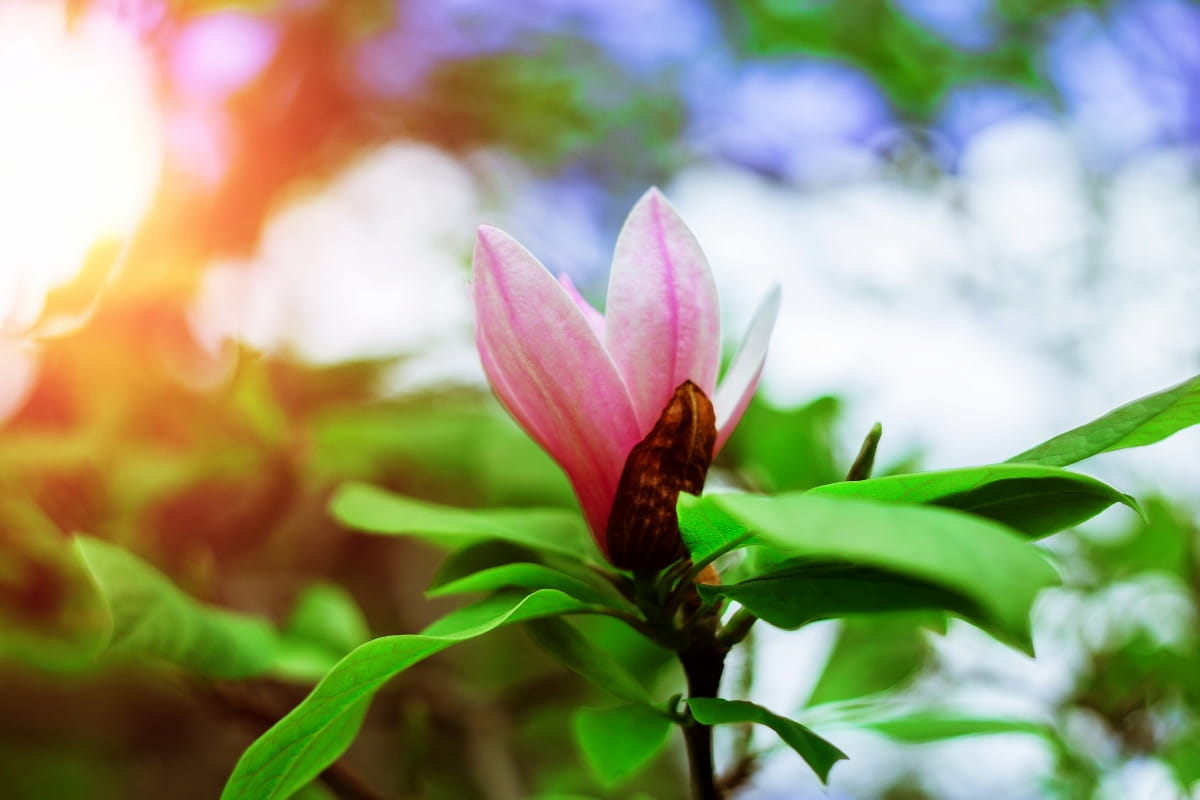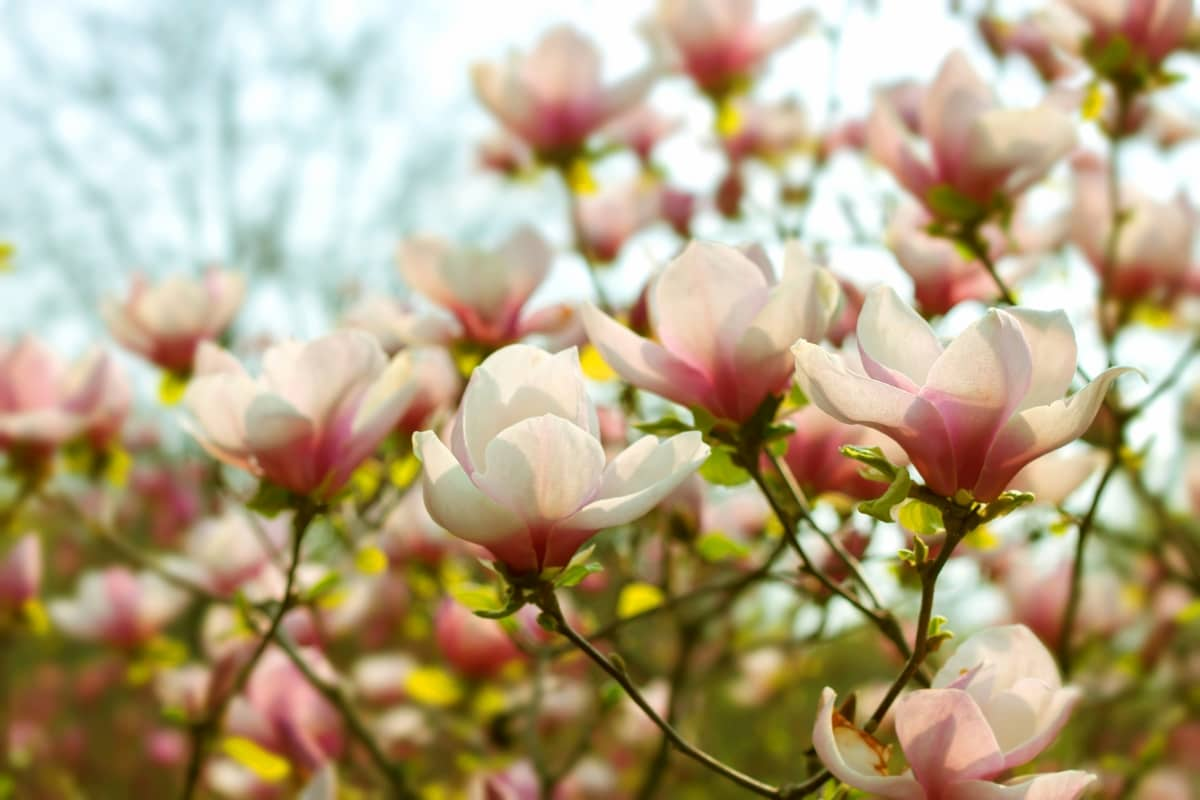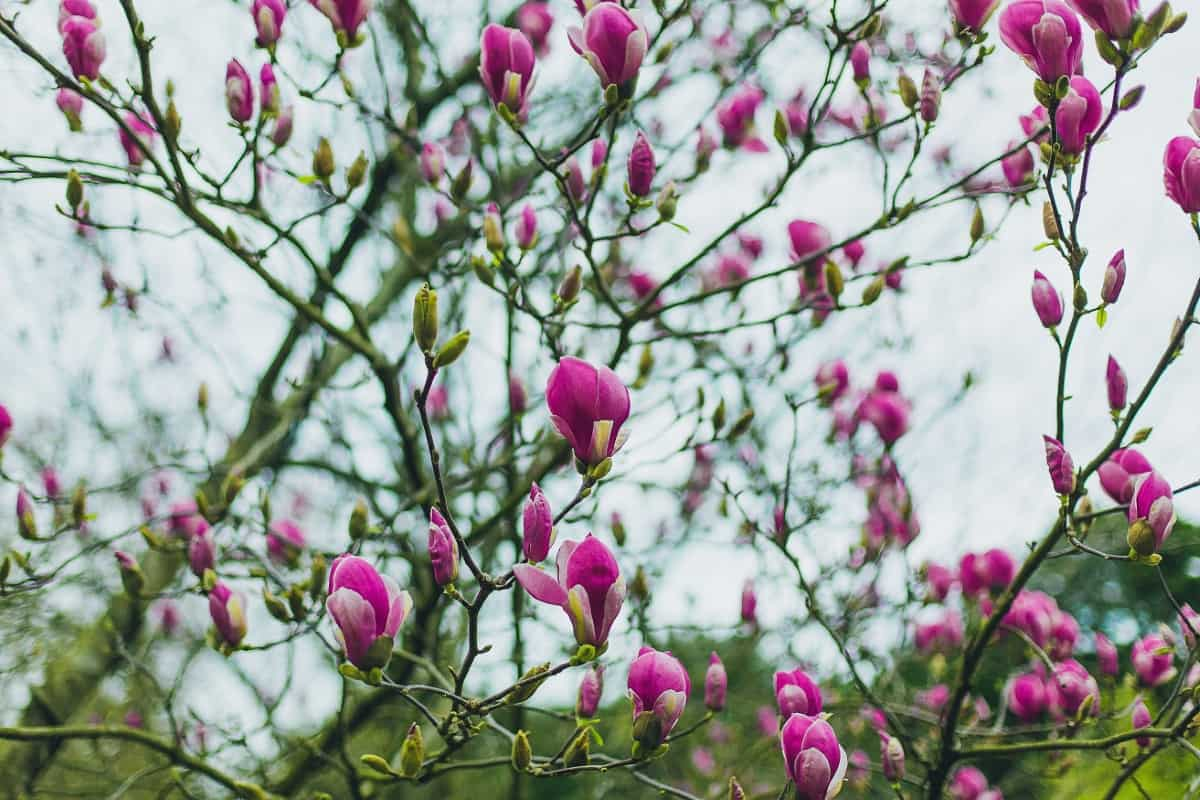Magnolia trees are enchanting to any garden, boasting lovely, fragrant flowers and a delightful aesthetic appeal. To have these nature’s wonders flourishing in your yard, you don’t necessarily need to buy matured trees or saplings. You can opt for more economical and rewarding methods: growing magnolia trees from cuttings and seeds. However, this process demands patience and effort, as it can take a few years for the plant to mature and bloom.

In this article, we’ll explore the step-by-step guide to propagating magnolia trees from cuttings and seeds, focusing on the best time of the year to take magnolia tree cuttings, how to prepare the soil and containers, pruning techniques, optimal conditions for successful germination, and seed treatment methods. We’ll also discuss how to plant magnolia seeds, the uses of magnolia seeds, and how long it does take to grow magnolia trees.
How to Grow Magnolia Tree from Cuttings and Seed
Step-By-Step Guide to Propagating Magnolia Trees from Cuttings and Seeds
- Select a healthy branch: This is an essential first step when growing from a cutting. Look for a mature and robust branch around two to three years old.
- Cut: Utilize precise gardening shears to execute a precise, 45-degree angled cut. Ensure the length of the cut spans approximately 6 to 8 inches.
- Prepare your cutting: Remove leaves from the lower half of the stem but keep 2-3 leaves at the top. This helps the cutting focus its energy on root growth.
- Dip in rooting hormone: To promote root development, dip the cut end in a rooting hormone.
- Plant the cutting: Place the cutting in a container filled with perlite and peat moss.
- Care for your cutting: Ensure the soil remains adequately hydrated and position the pot in a favorable location with ample warmth and sunlight.
Growing from seeds, it’s quite a different process. First, collect ripe seeds from the base of the magnolia flower in the late summer or early fall. Then, clean the seeds and store them in a cool, dry place until the spring. In the spring, you can sow your seeds in a magnolia pot filled with a good quality potting mix. Water them well and place them in a warm, sunny spot.
Best Time of Year to Take Magnolia Tree Cuttings for Successful Rooting
Magnolia trees can be propagated from cuttings any time of the year, but the best time is late spring or early summer when the tree is actively growing. This is when the branches are flexible and filled with sap, making them ideal for rooting. Cuttings taken during this period tend to root quicker and more successfully.
Preparing the Soil and Containers for Planting Magnolia Tree Cuttings
To ensure successful propagation, preparing the soil and containers correctly is crucial. Choose a small pot with ample drainage holes for each cutting to prevent water logging. An optimal medium for propagating magnolia cuttings consists of a balanced blend of peat moss and perlite, ensuring effective drainage. Before planting the cuttings, make sure to pre-moisten the potting mix.
Essential Techniques for Proper Pruning and Preparing Magnolia Tree Cuttings
Preparing magnolia cuttings correctly is key to successful propagation. Remember to make a clean cut at a 45-degree angle about 1/4 inch below a node (the bump where a leaf or branch would sprout) when you’re pruning your cutting from the parent tree. Keep the cutting always moist until it’s ready to be planted.
In case you missed it: How to Plant and Care for Snake Plant: Propagation to Growing Instructions

Trim the lower half of the cutting by removing its leaves, while retaining 2-3 leaves on the upper portion. This facilitates photosynthesis in the cutting and directs its energy towards root development. Prior to planting the cuttings in the designated pots, it is advisable to apply rooting hormone to the cut end.
Optimal Conditions for Successful Germination of Magnolia Tree Seeds
Magnolia seeds require specific conditions for successful germination. They need well-drained soil and a warm, sunny location. The soil should be kept moist but not waterlogged. In terms of temperature, they prefer a range between 70 and 85 degrees Fahrenheit. Magnolia seeds also prefer a slightly acidic pH between 5.5 and 6.5. If you provide these conditions, your magnolia seeds will have the best chance of germinating and developing into healthy, beautiful trees.
Stratification Process and Duration for Maximizing Magnolia Seed Germination
Stratification, or simulating natural winter conditions to break seed dormancy, is vital for magnolia seed germination. After the collection and purification process, it is recommended to combine magnolia seeds with lightly dampened peat moss or sand, transfer them into a plastic bag, and store them in a refrigerator for a period of 3 to 6 months. This cold period prepares the seeds for germination, increasing their chances of sprouting when planted in spring. Make sure to check periodically and remove any seeds that show signs of mold.
Seed Treatment Methods to Improve the Viability of Magnolia Tree Seeds
Seed treatment is an essential step to ensure healthy germination. First, cleaning the seeds thoroughly to remove any attached flesh is necessary, which can encourage mold growth. Pre-soaking seeds in lukewarm water for approximately 24 hours prior to planting can aid in seed coat softening and accelerate the germination process. Some people even suggest lightly sanding the seed coat to allow for easier water penetration, but this is optional and should be done carefully to avoid damaging the seed.
Successful Rooting Hormone Application for Magnolia Tree Cuttings
Rooting hormone application can significantly increase the chances of successful magnolia tree-cutting propagation. To apply, dip the cut end into the rooting hormone, ensuring it is covered well. Gently shake off any excess before planting it in your prepared potting mix. The rooting hormone encourages the growth of new roots and helps the cutting establish itself more quickly in its new pot.
In case you missed it: How to Grow and Care for Persian Shield: Planting Instructions

Conclusion
Growing a magnolia tree from cuttings or seeds can be a rewarding experience. It requires patience and some work, but the result is worth it. You can ensure successful propagation by carefully selecting and preparing your cuttings, providing the right conditions, and taking care of your seeds. Whether you are drawn to the magnolia tree for its enchanting flowers, lovely scent, or elegant shape, learning to grow this tree is a valuable skill for any gardening enthusiast.
- Ultimate Guide to Ossabaw Island Hog: Breeding, Raising, Diet, and Care
- Ultimate Guide to Juliana Pig: Raising Facts, Size, Diet, Care, and Lifespan
- Raising Lleyn Sheep: Disadvantages, Price, Uses, Characteristics, and Care
- Ultimate Guide to Meishan Pig: Breed Facts, Breeding, Raising, and Care
- Ultimate Guide to Teacup Pigs: Raising, Diet, Lifespan, Cost, and Care
- Guide to Raising Poll Dorset Sheep: Facts, Profile, Characteristics, Uses, and Care
- Ultimate Guide to Bighorn Sheep: Characteristics, Diet, Lifespan, Breeding, and Lifecycle
- Ultimate Guide to Raising Katahdin Sheep: Farming Facts, Breed Profile, Uses, and Care
- Ultimate Guide to Raising Oreo Cows: Belted Galloways Farming Facts, Profile, Uses, and Care